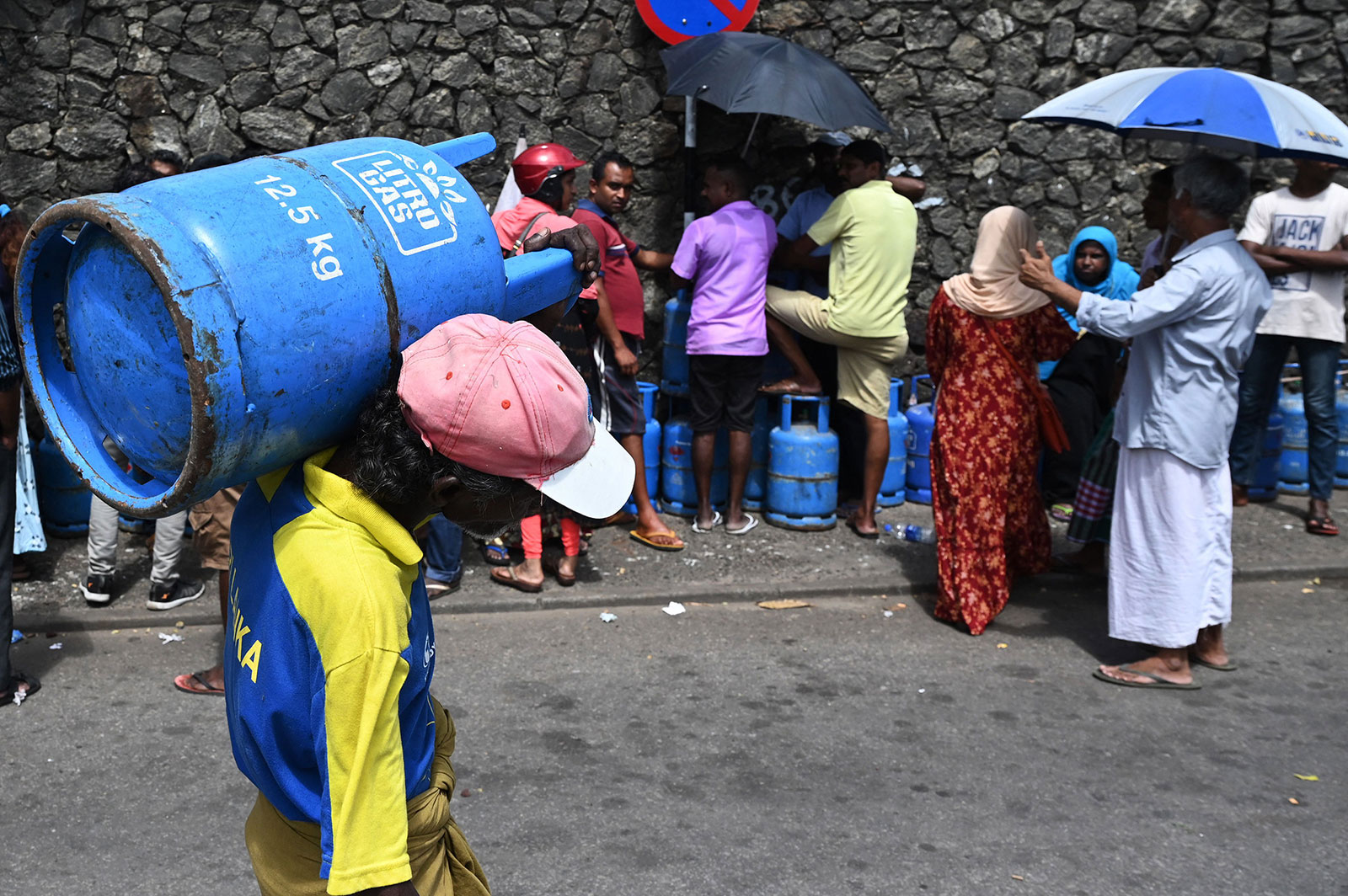
Sri Lanka, an island nation of 22 million, is suffering from its worst financial crisis since it gained independence in 1948.
Crippling inflation is sending the cost of basic goods skyrocketing. Its foreign exchange reserves plummeted to record lows, with dollars running out to pay for essential imports including food, medicine and fuel.
Government ministers were resigning en masse and Sri Lankans are out on the streets to protest as the crisis has turned their daily lives into an endless cycle of waiting in lines for basic goods, many of which are being rationed.
Despite earlier efforts by the government to ease the crisis, like the introduction of a four-day work week, then-Prime Minister Wickremesinghe declared the country “bankrupt” last Tuesday.
In several major cities including the capital, Colombo, desperate residents continue to queue for food and medicine, with reports of civilians clashing with police and the military as they wait in line.
In early July, Energy Minister Kanchana Wijesekera said the country had less than a day’s worth of fuel left.
Trains have reduced in frequency, forcing travelers to squeeze into compartments and even sit precariously on top of them as they commute to work.
Patients are unable to travel to hospitals due to the fuel shortage and food prices are soaring. Rice, a staple in the South Asian nation, has disappeared from shelves in many shops and supermarkets.
How we got here: The crisis has been years in the making, said experts, who point to a series of government decisions that compounded external shocks.
Over the past decade, the Sri Lankan government has borrowed vast sums of money from foreign lenders to fund public services, said Murtaza Jafferjee, chair of Colombo-based think tank Advocata Institute.
This borrowing spree has coincided with a series of hammer blows to the Sri Lankan economy, from both natural disasters — such as heavy monsoons — to man-made catastrophes, including a government ban on chemical fertilizers that decimated farmers’ harvests.
Facing a massive deficit, President Gotabaya Rajapaksa slashed taxes in a doomed attempt to stimulate the economy.
But the move backfired, instead hitting government revenue. That prompted rating agencies to downgrade Sri Lanka to near default levels, meaning the country lost access to overseas markets.
Sri Lanka then had to fall back on its foreign exchange reserves to pay off government debt, shrinking its reserves. This impacted imports of fuel and other essentials, which sent prices soaring.
Topping all that, the government in March floated the Sri Lankan rupee — meaning its price was determined based on the demand and supply of foreign exchange markets.
However, the plunging of the rupee against the US dollar only made things worse for ordinary Sri Lankans.
Public frustration and anger erupted on March 31, when demonstrators hurled bricks and started fires outside the President’s private residence. On Saturday, protests boiled over as people stormed the residence, calling for his resignation. In the latest developments, President Rajapaksa fled to Maldives and Prime Minister Wickremesinghe was appointed as acting president. Currently, Sri Lankans are still protesting on the streets and there is a lot of uncertainty over who is in charge and what the outcome of this turmoil will be.
Stay connected with us on social media platform for instant update click here to join our Twitter, & Facebook
We are now on Telegram. Click here to join our channel (@TechiUpdate) and stay updated with the latest Technology headlines.
For all the latest World News Click Here
